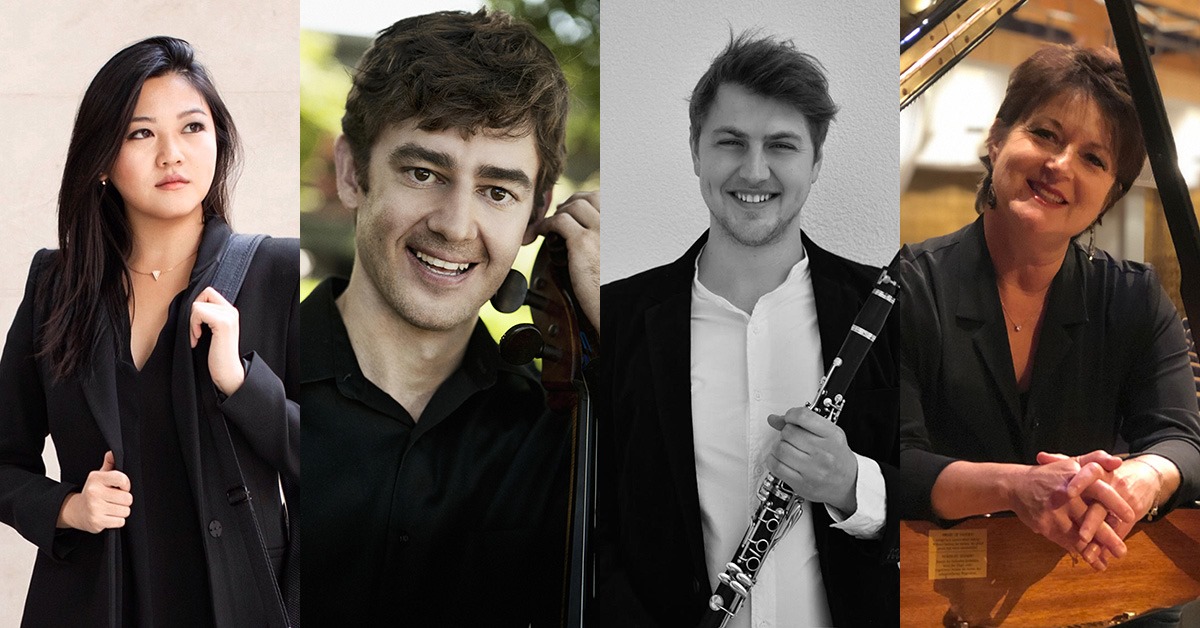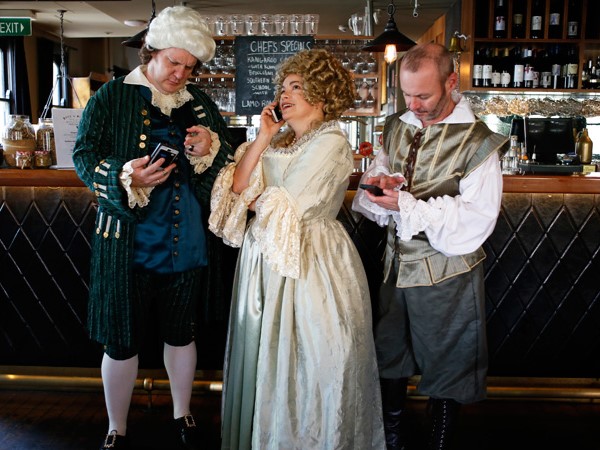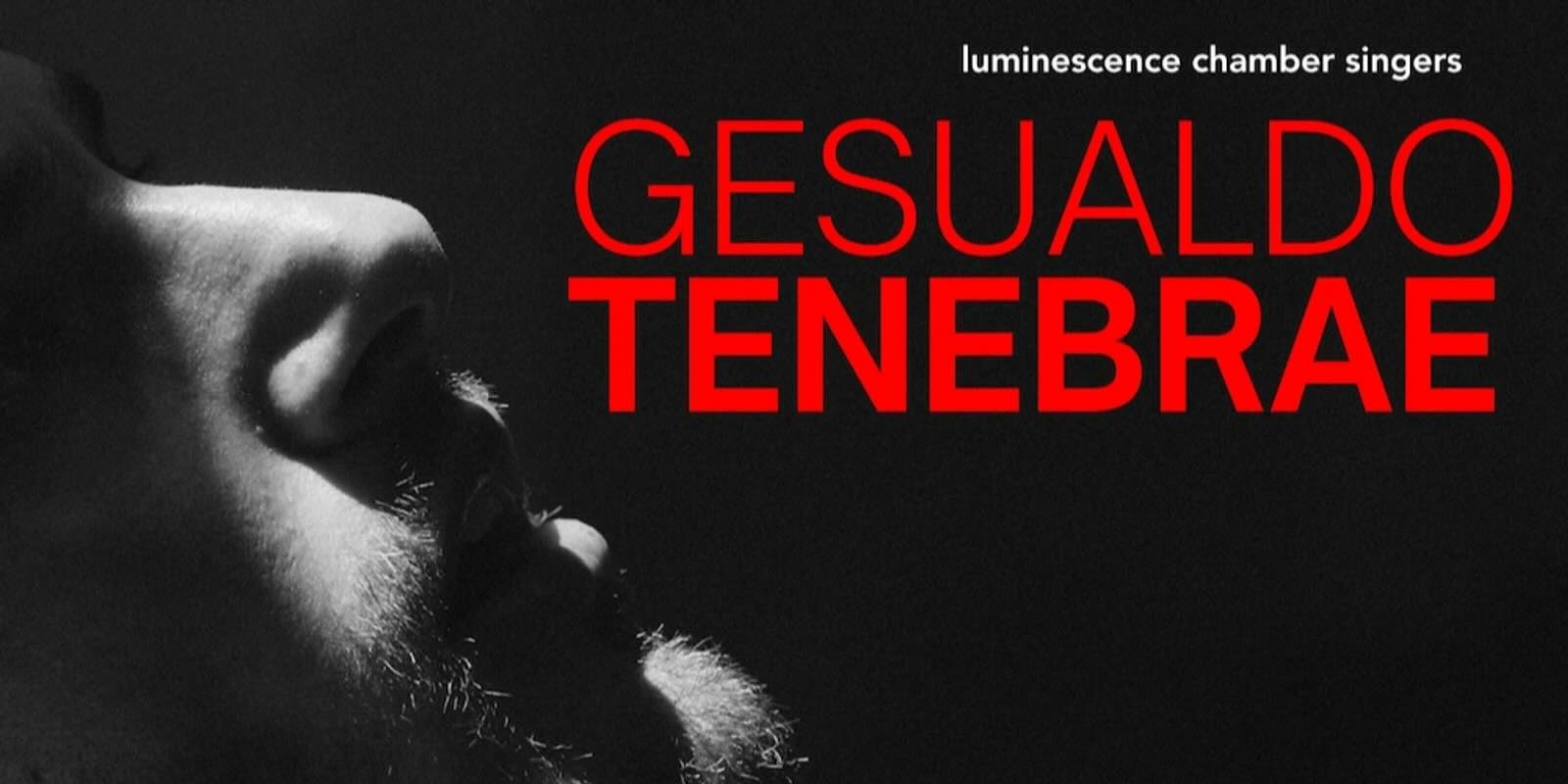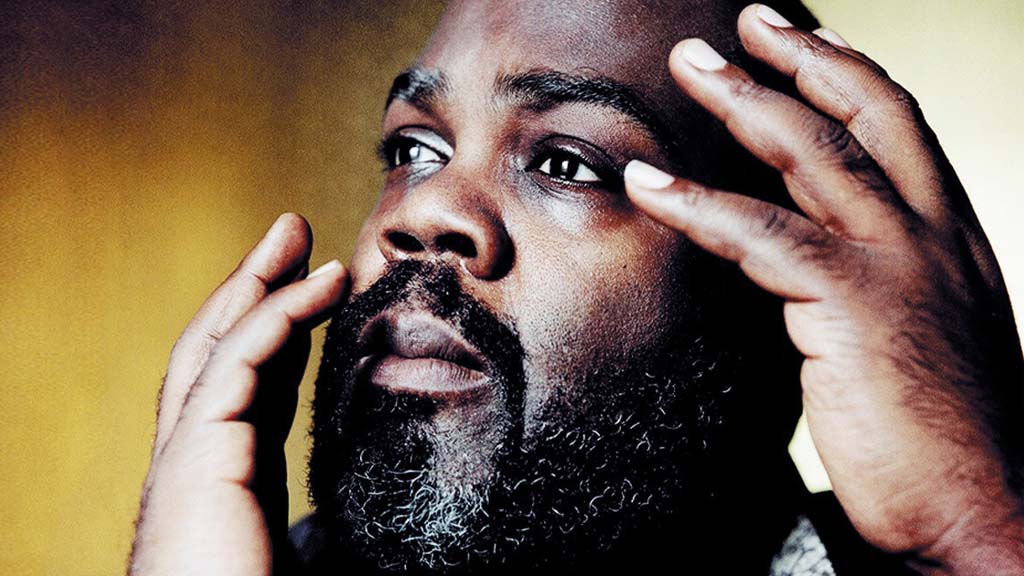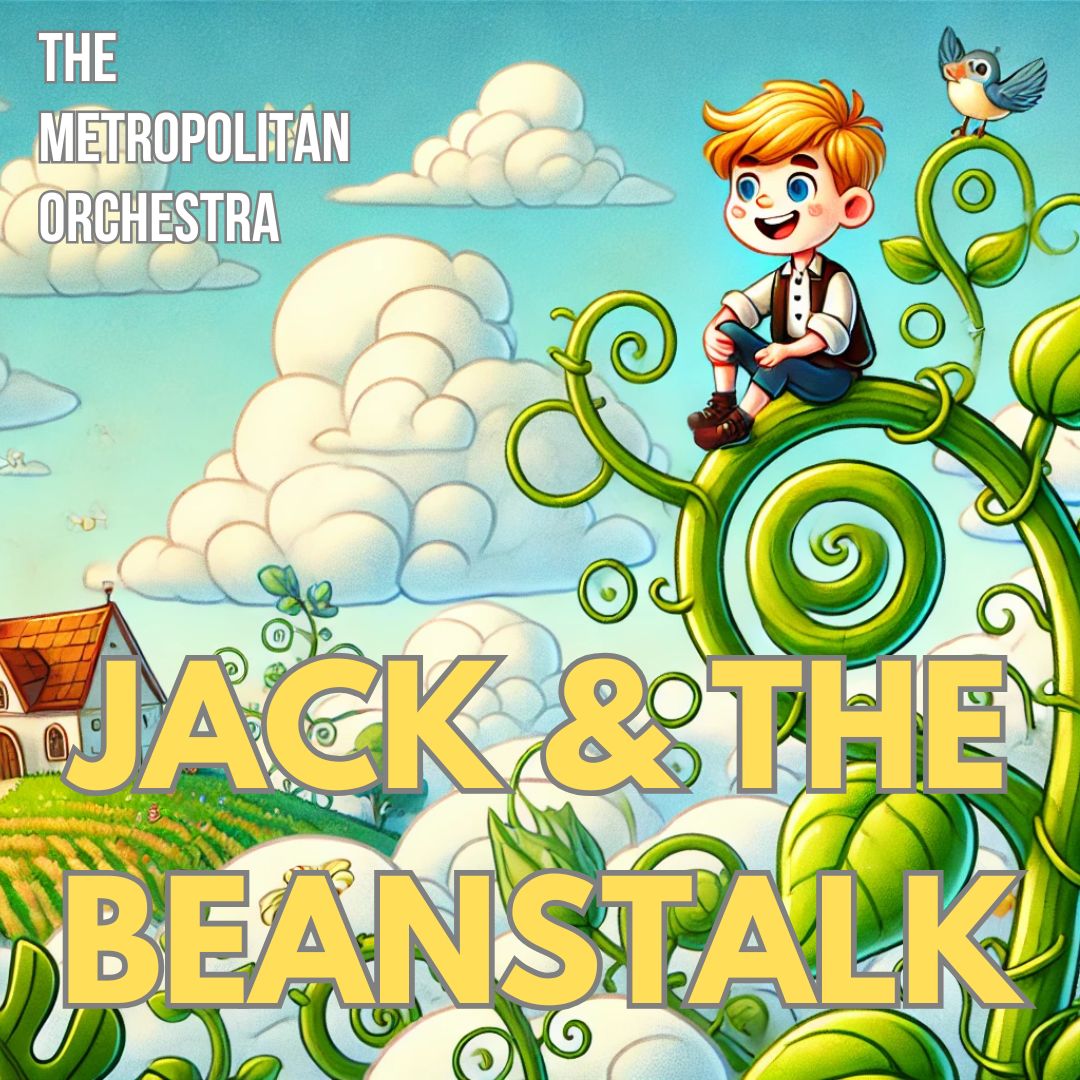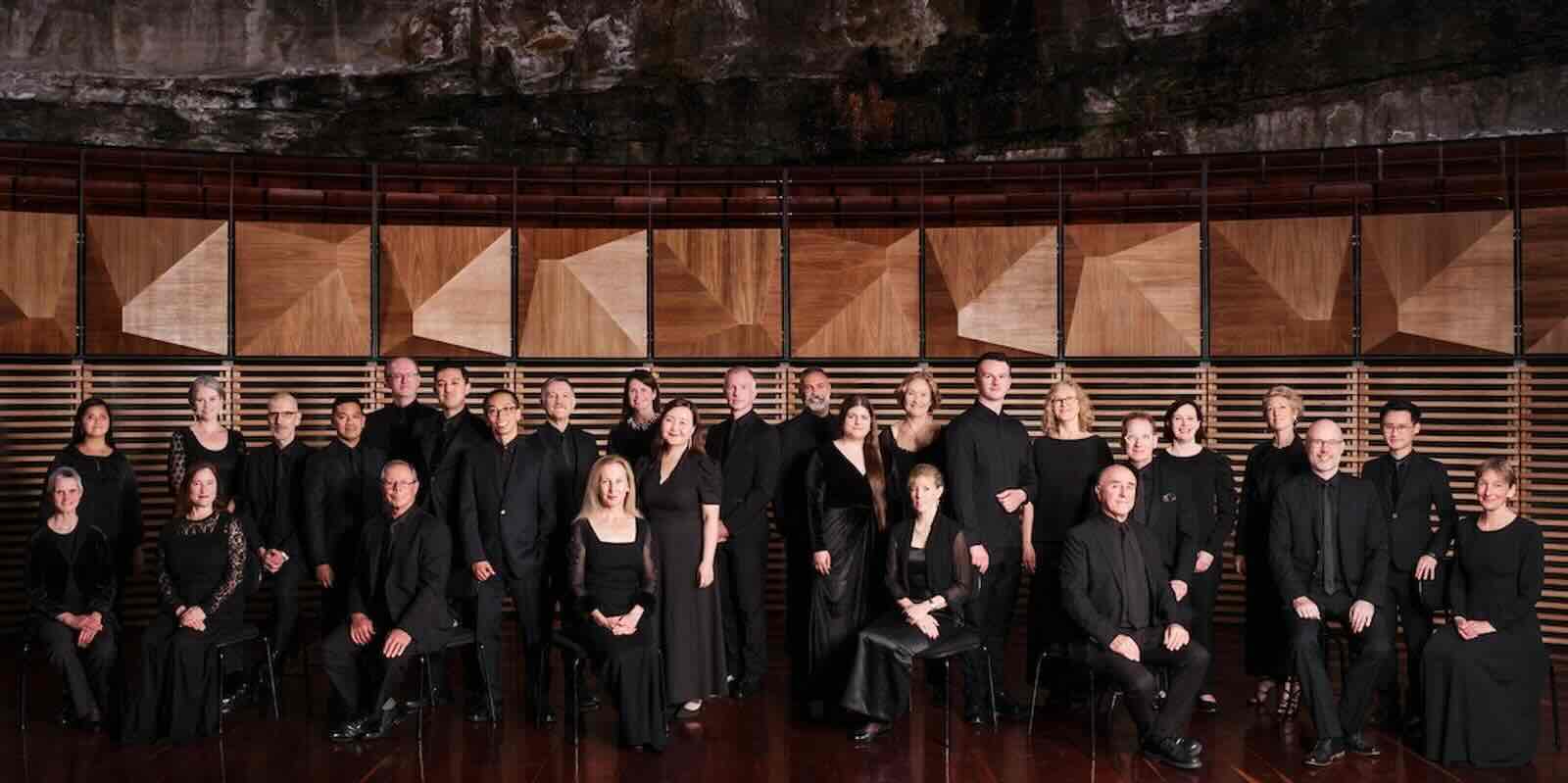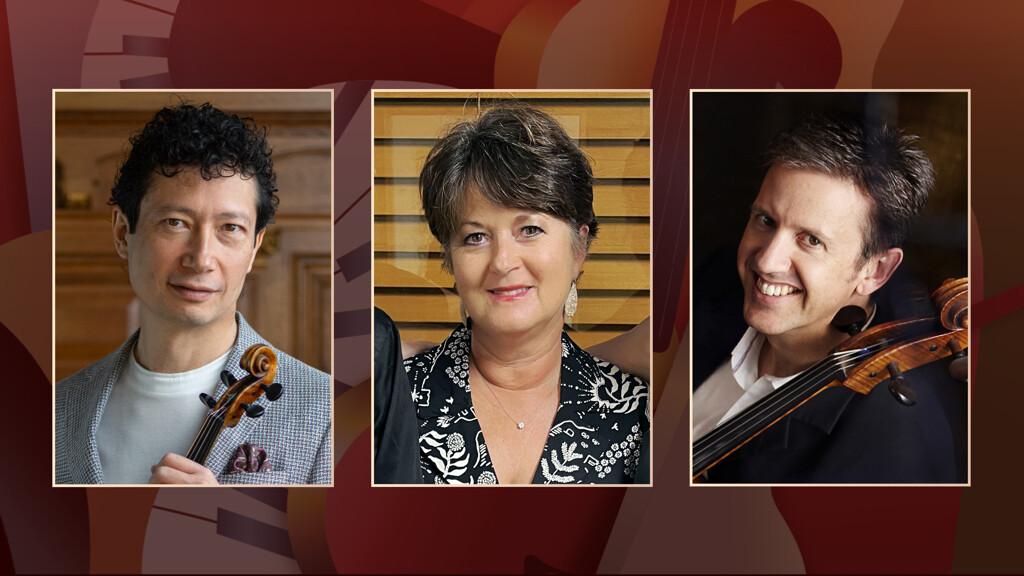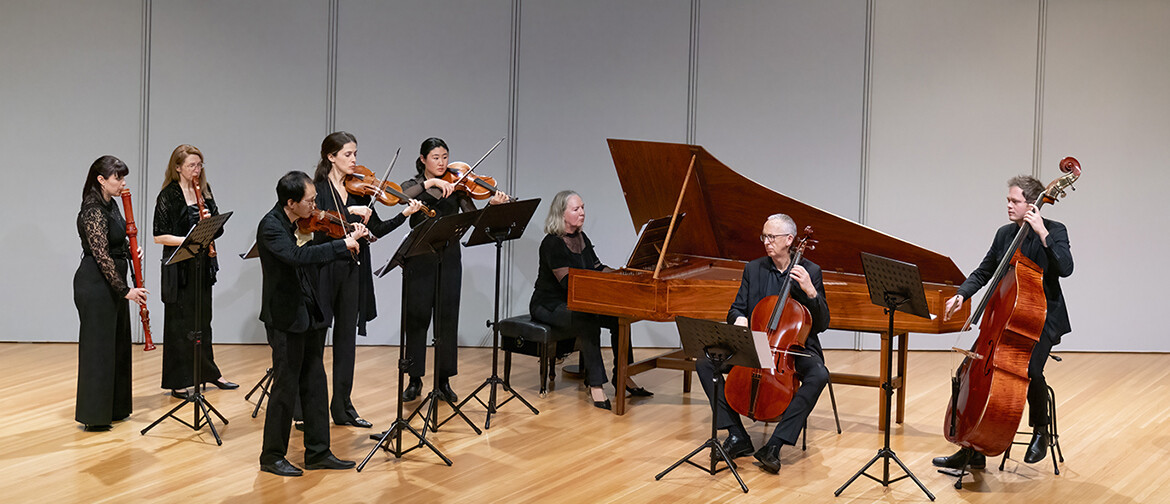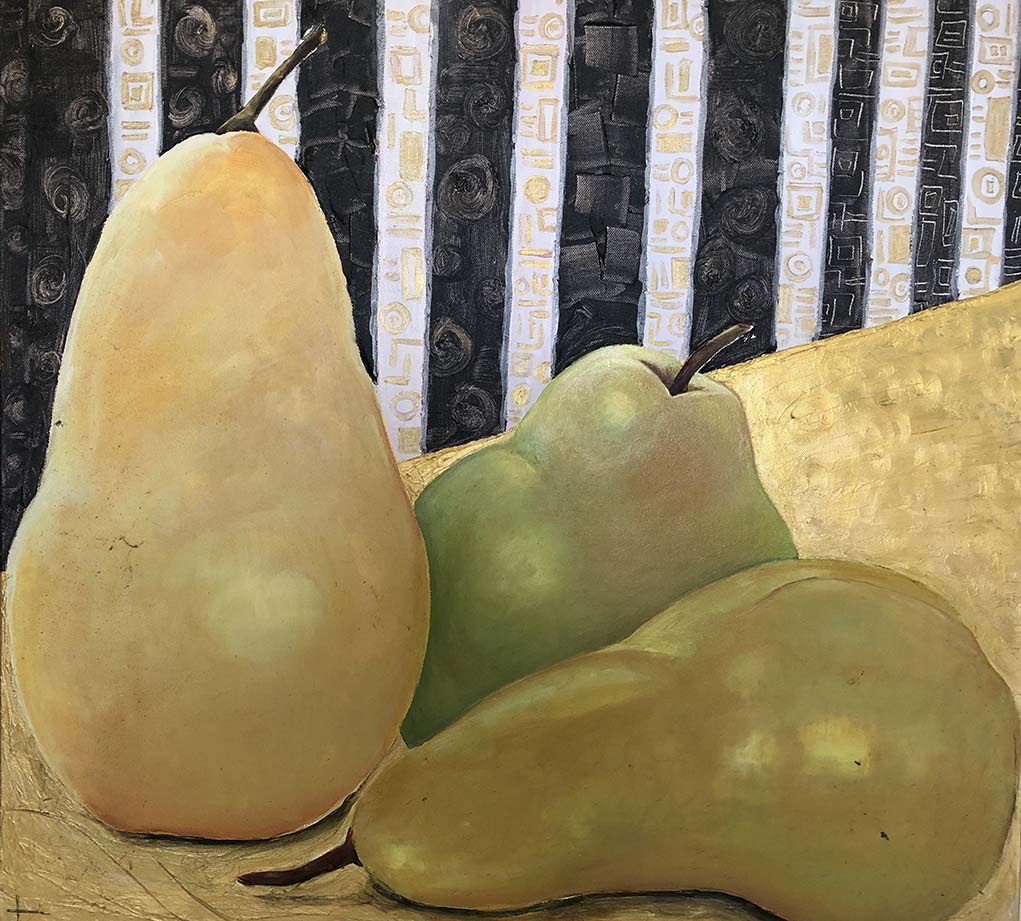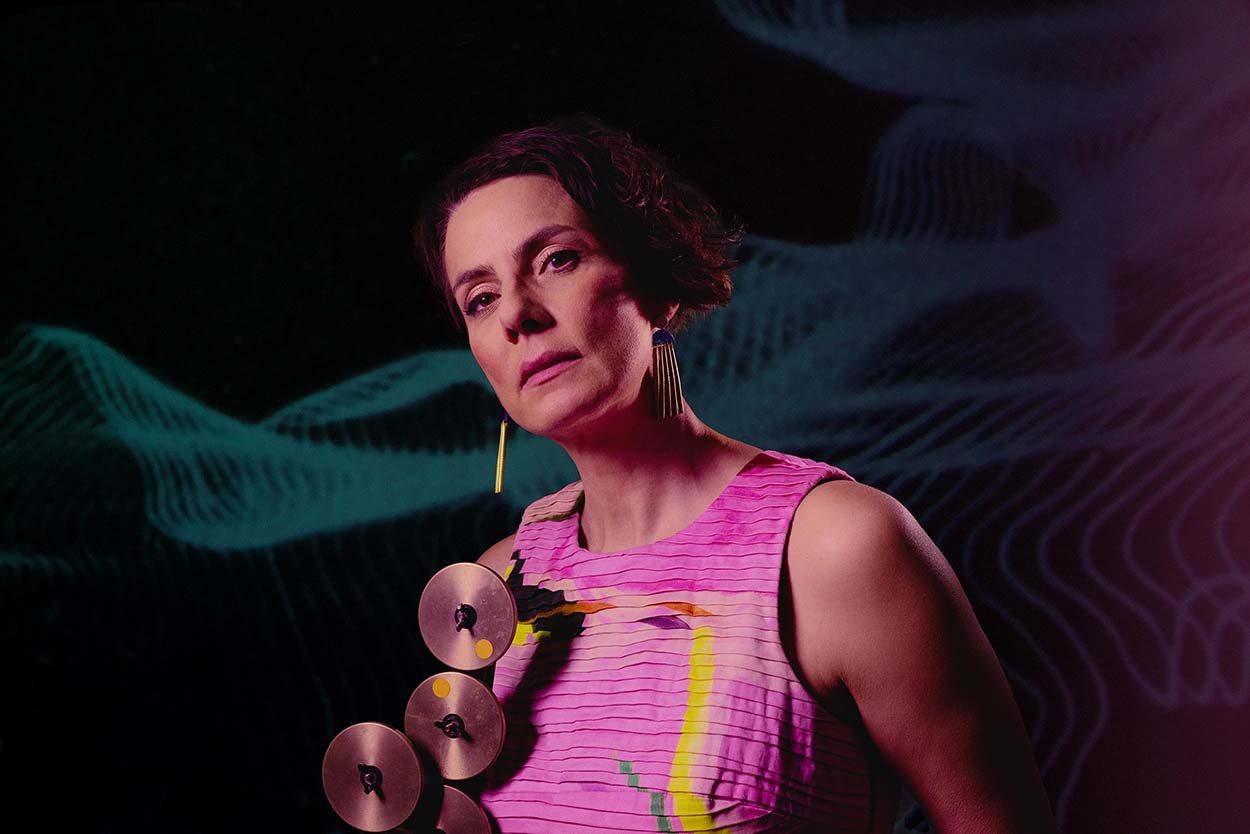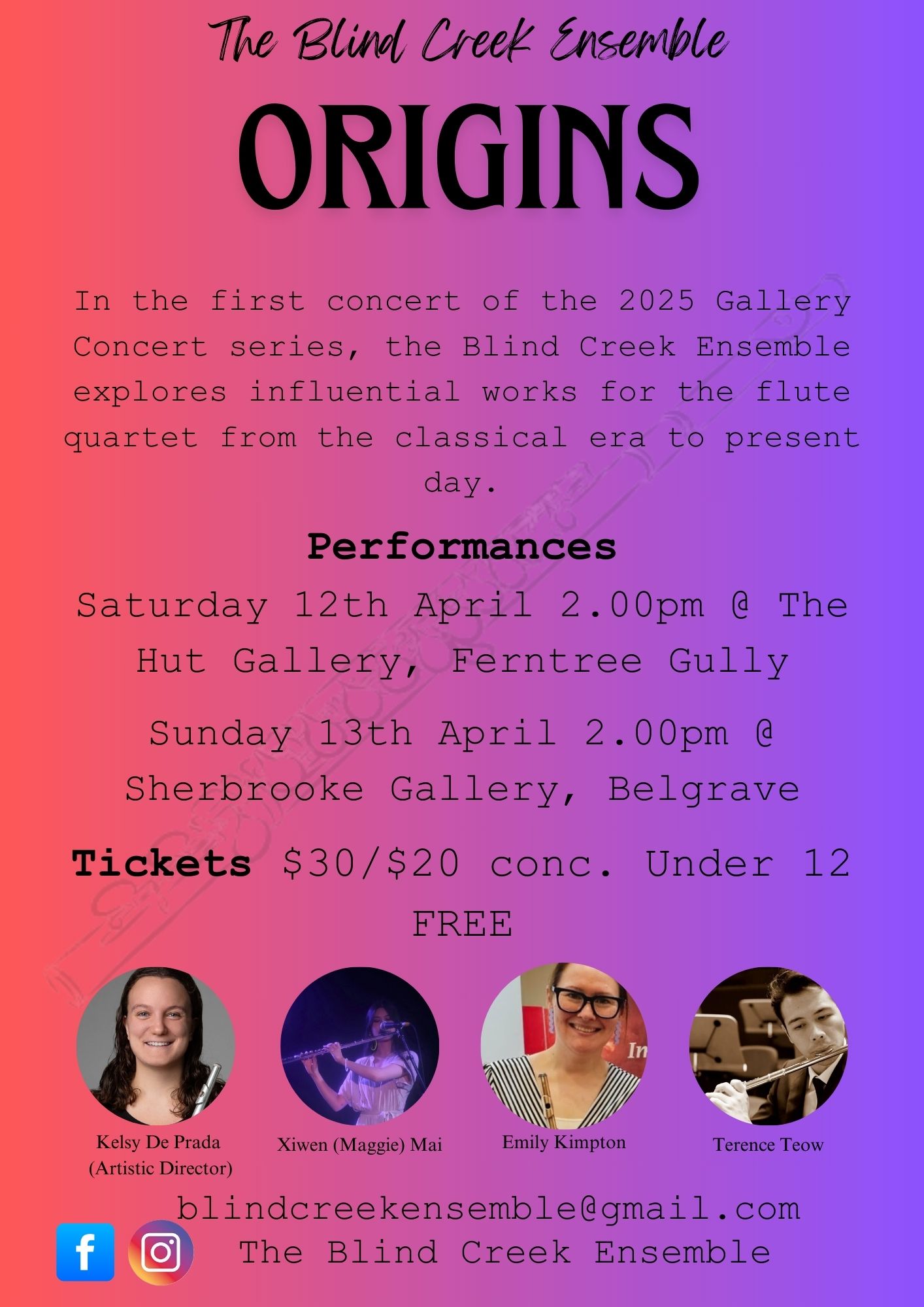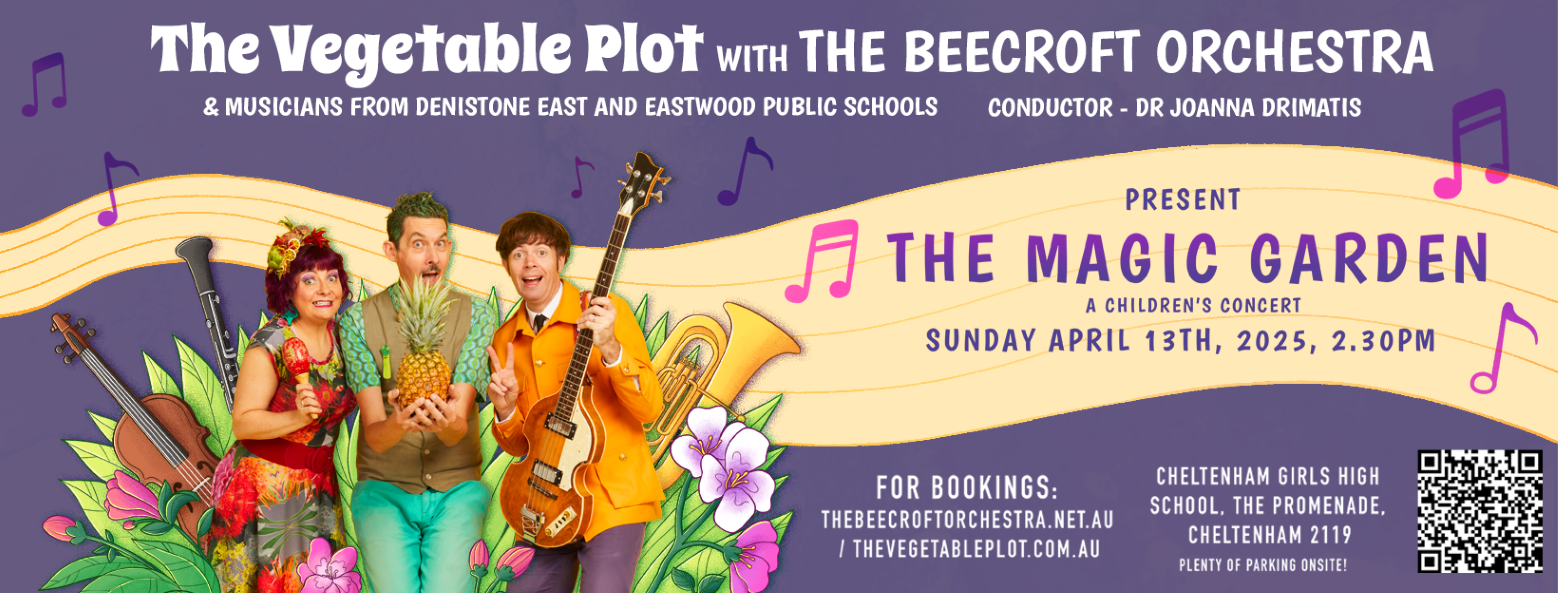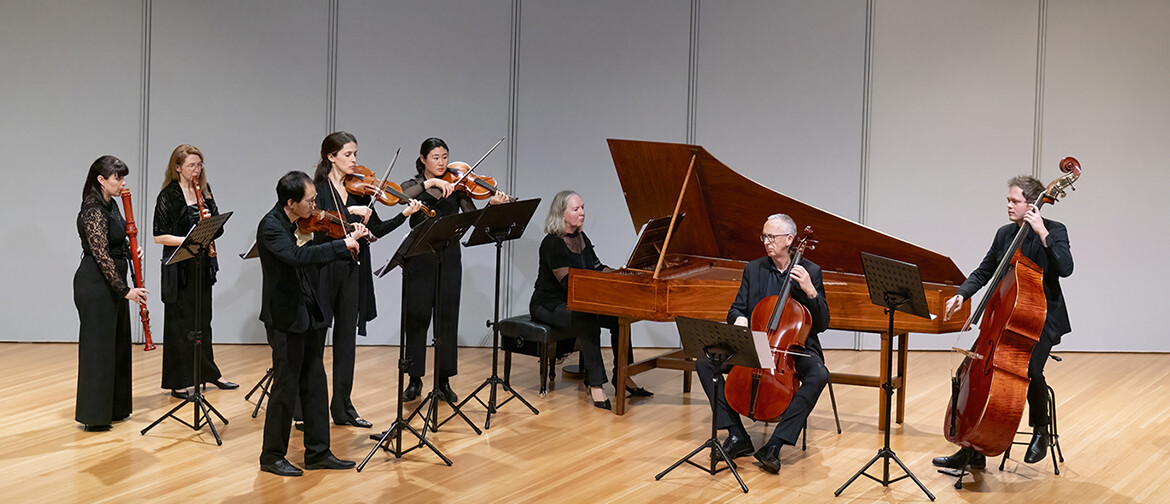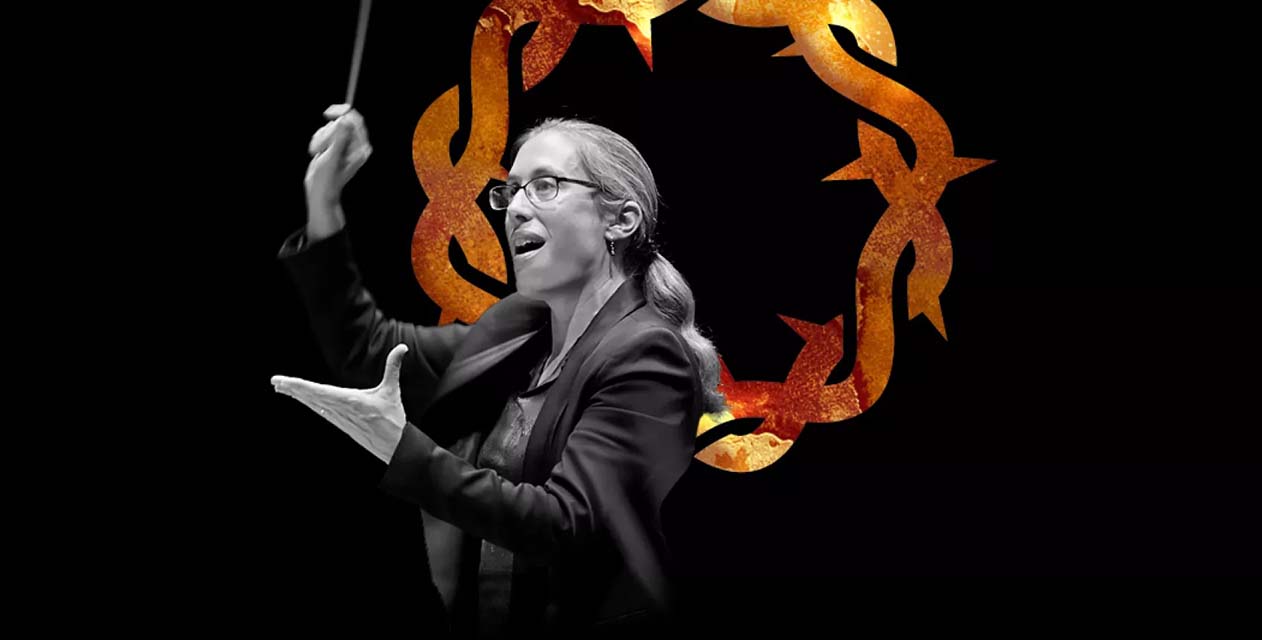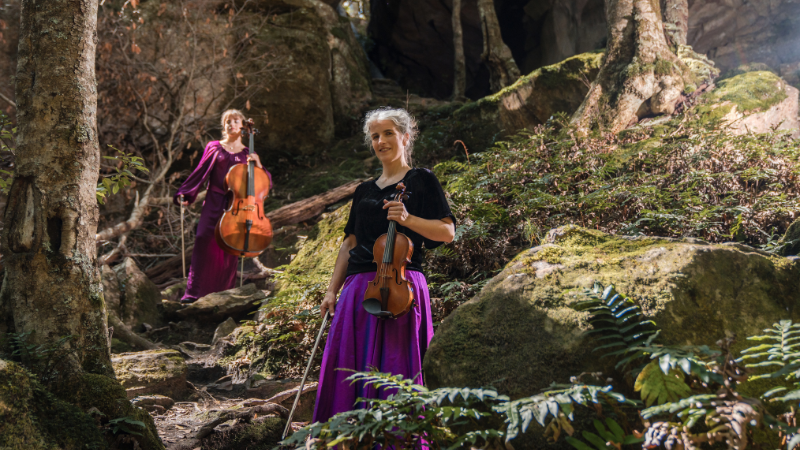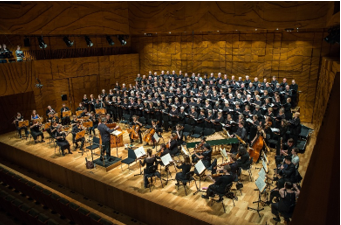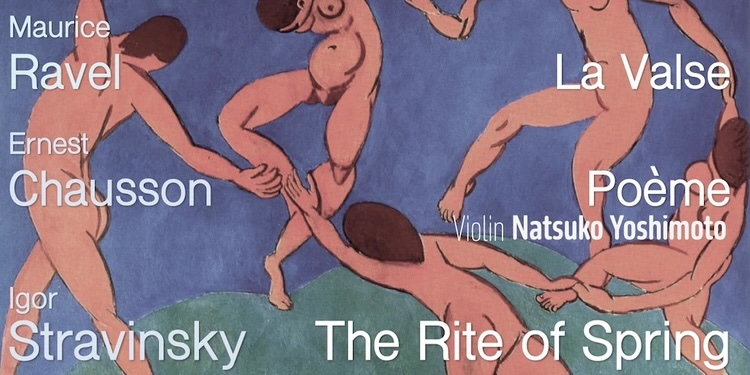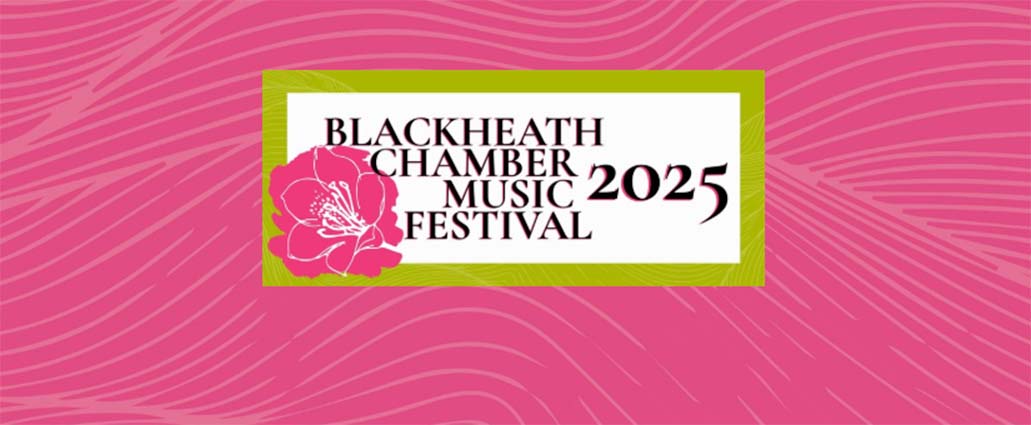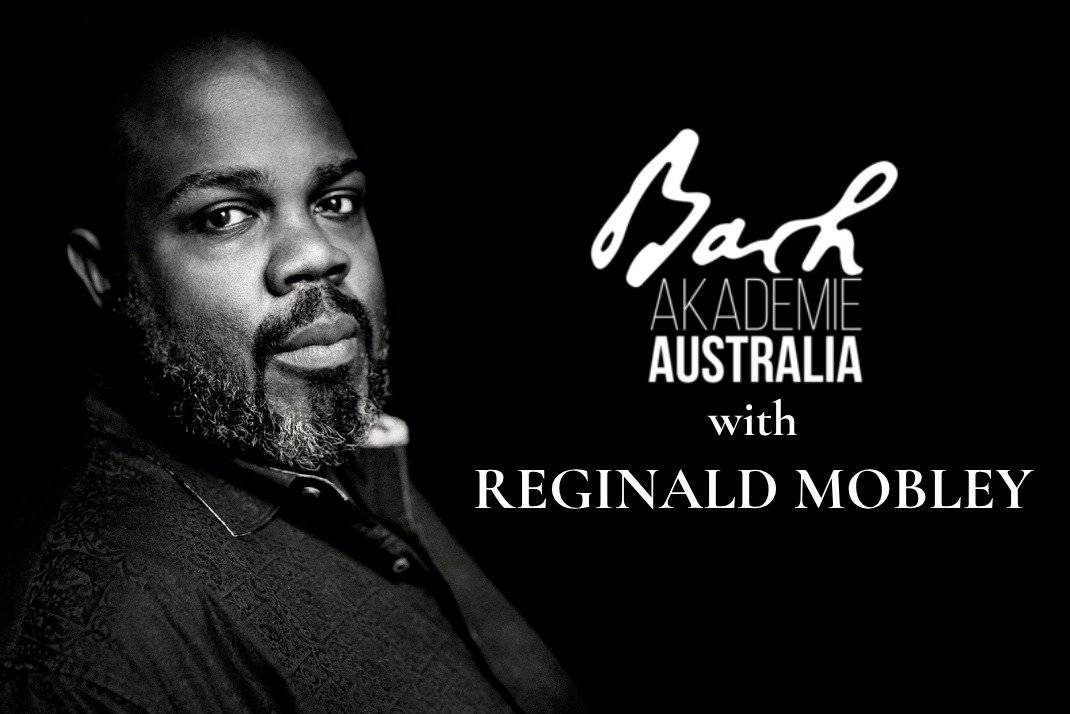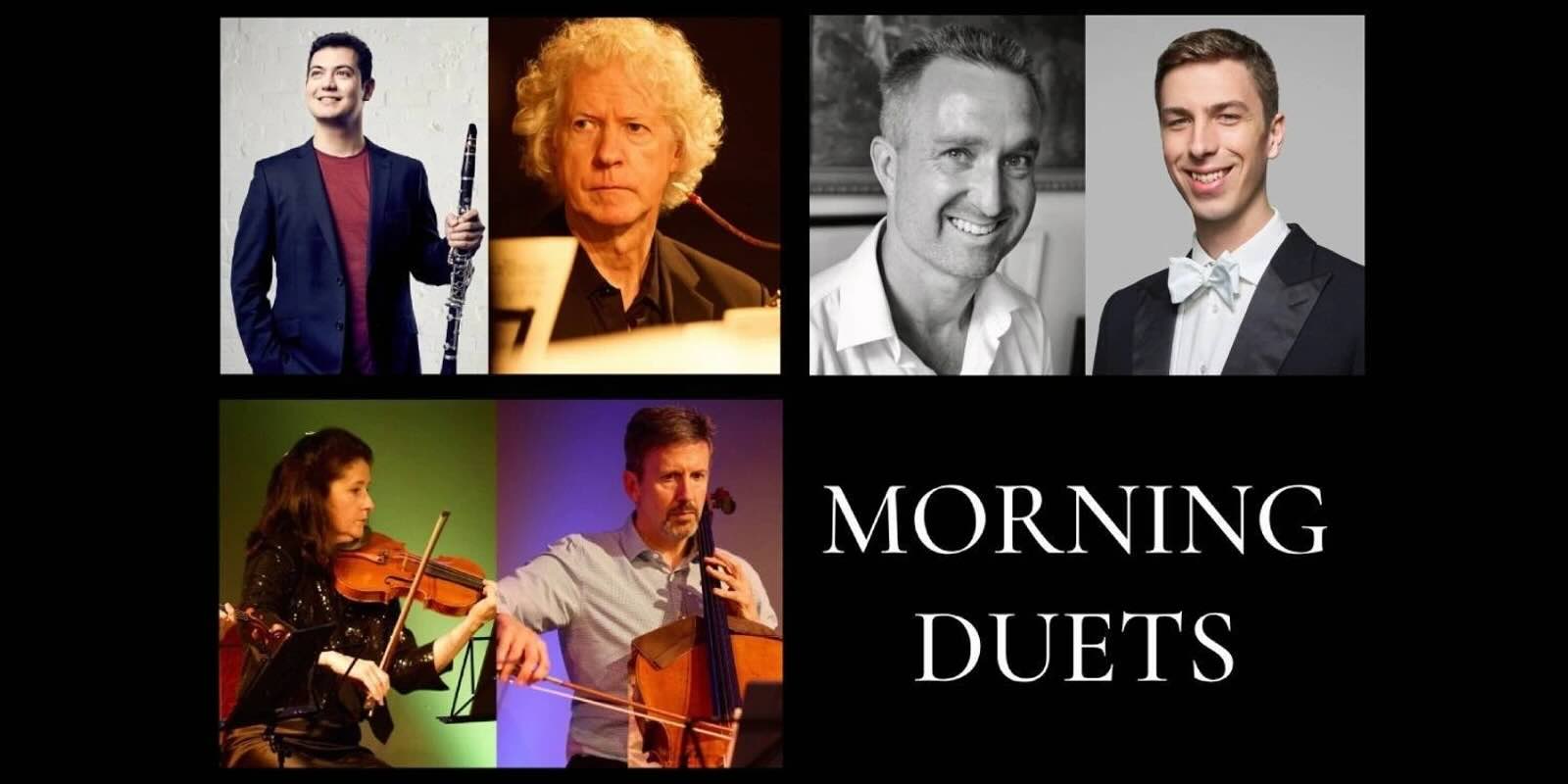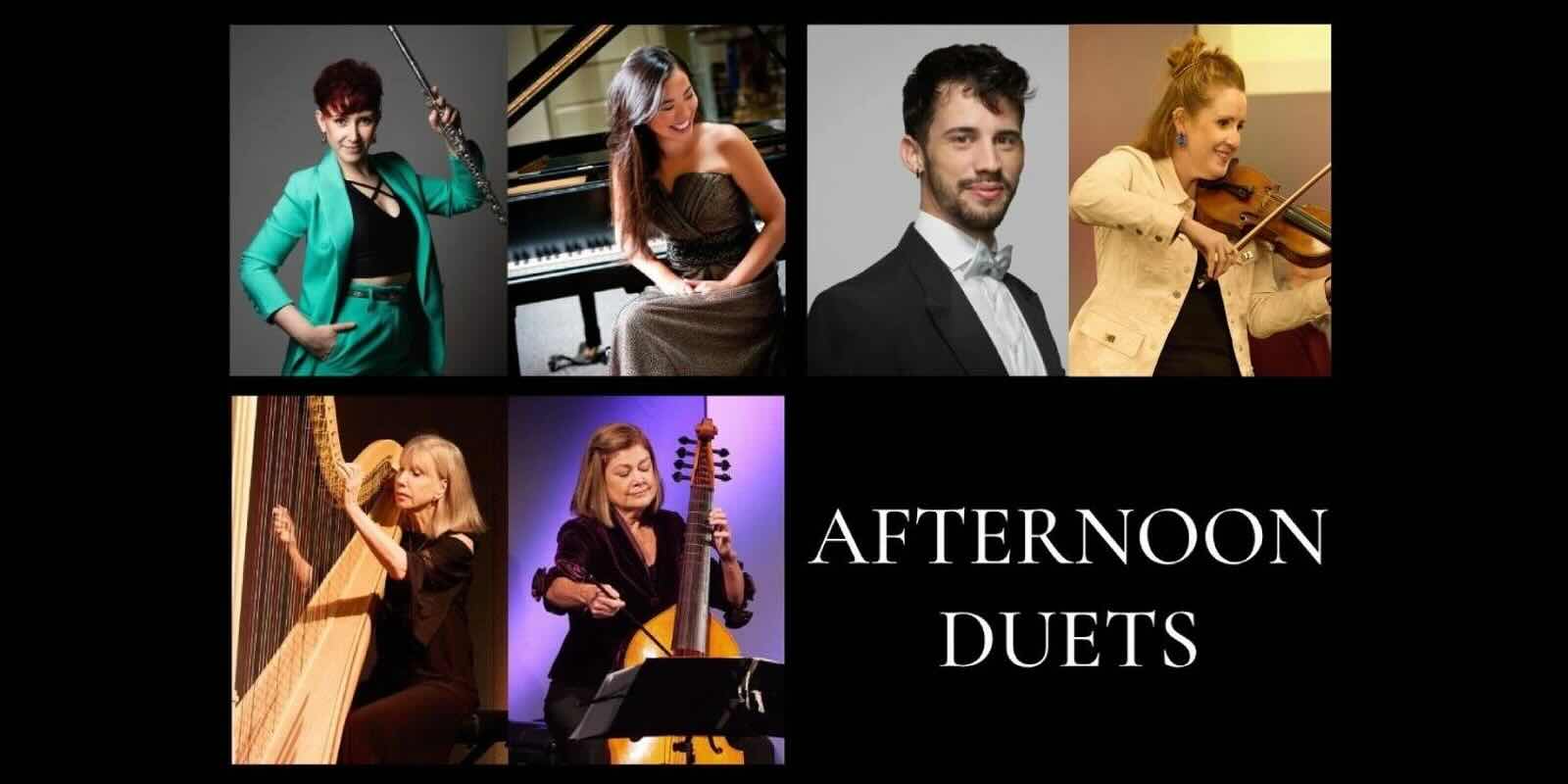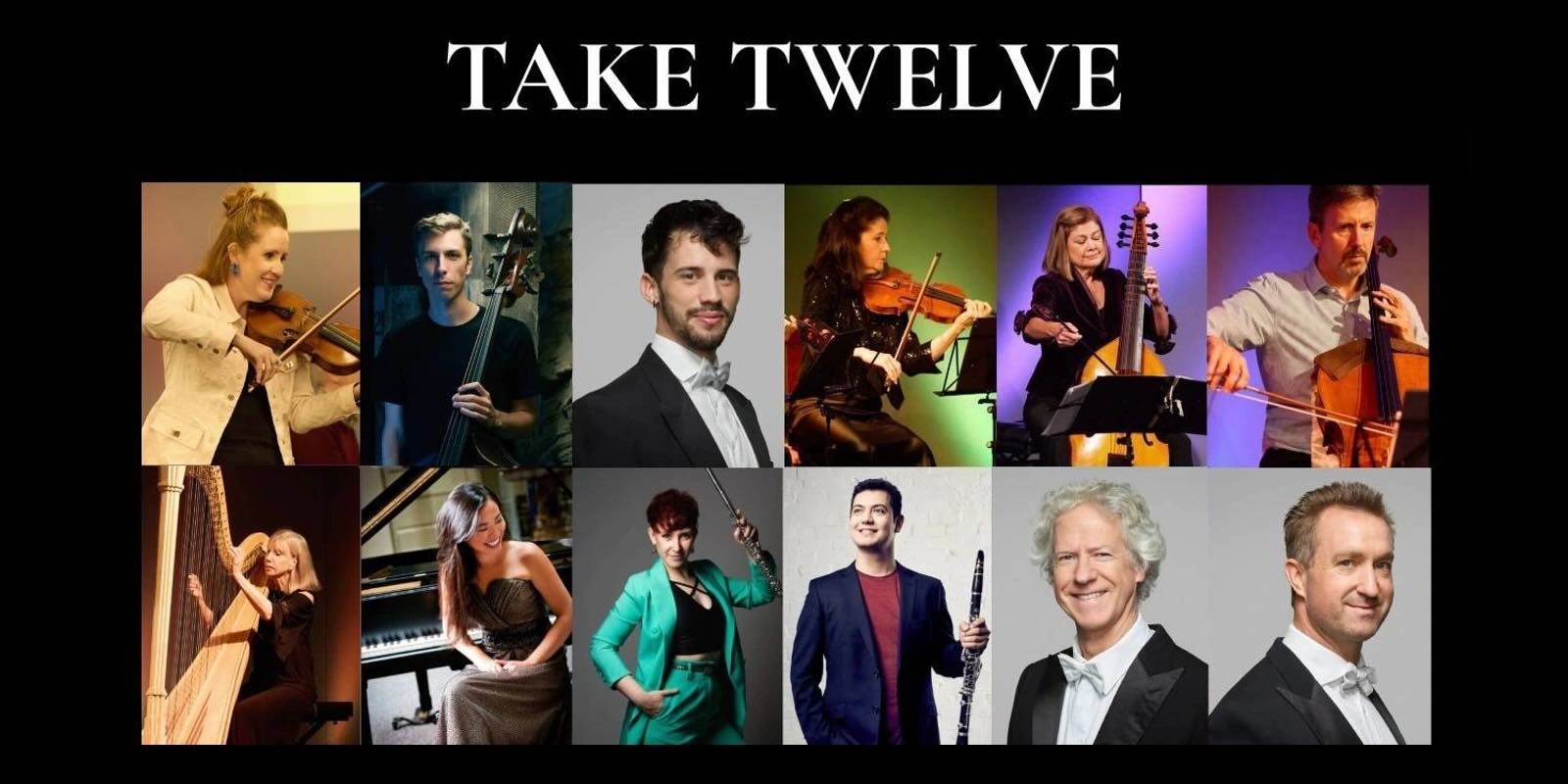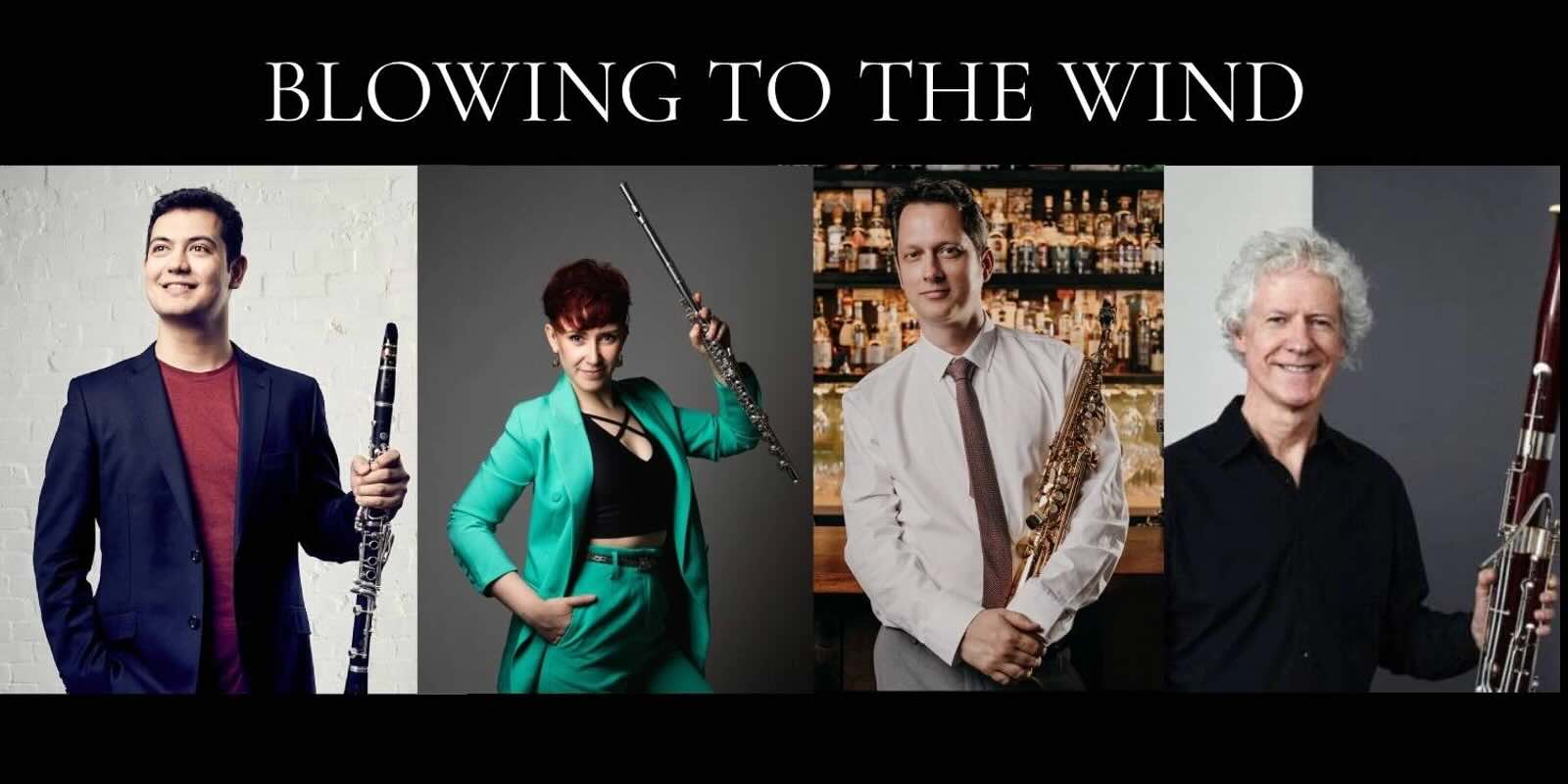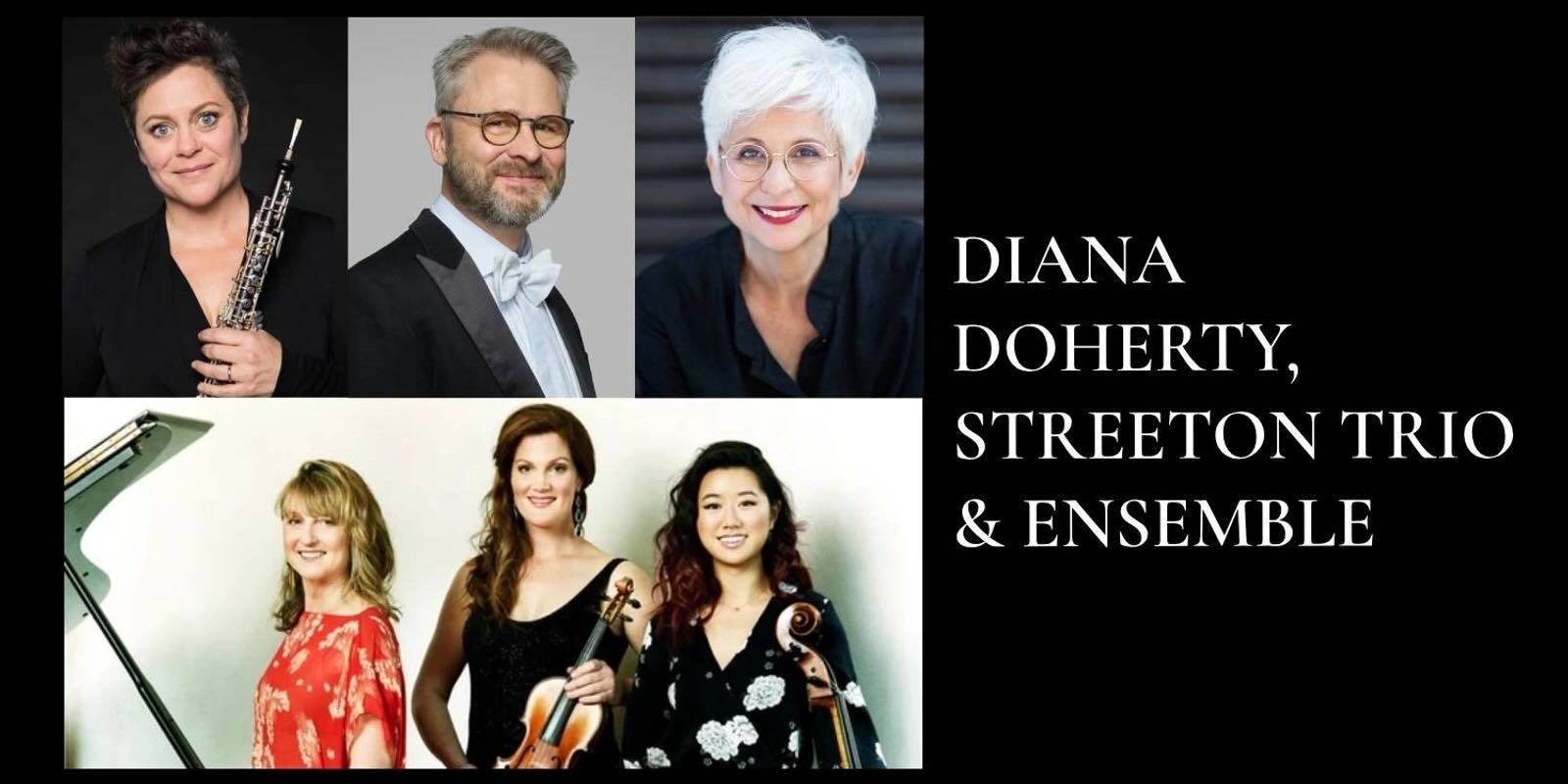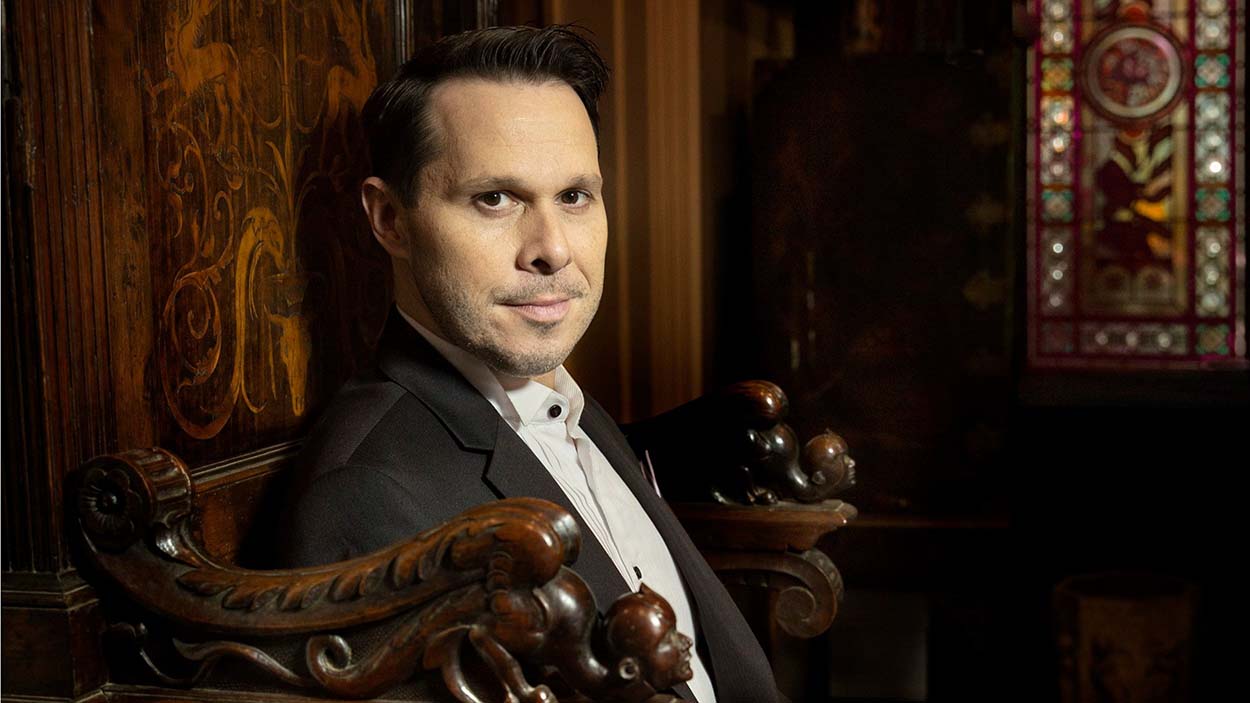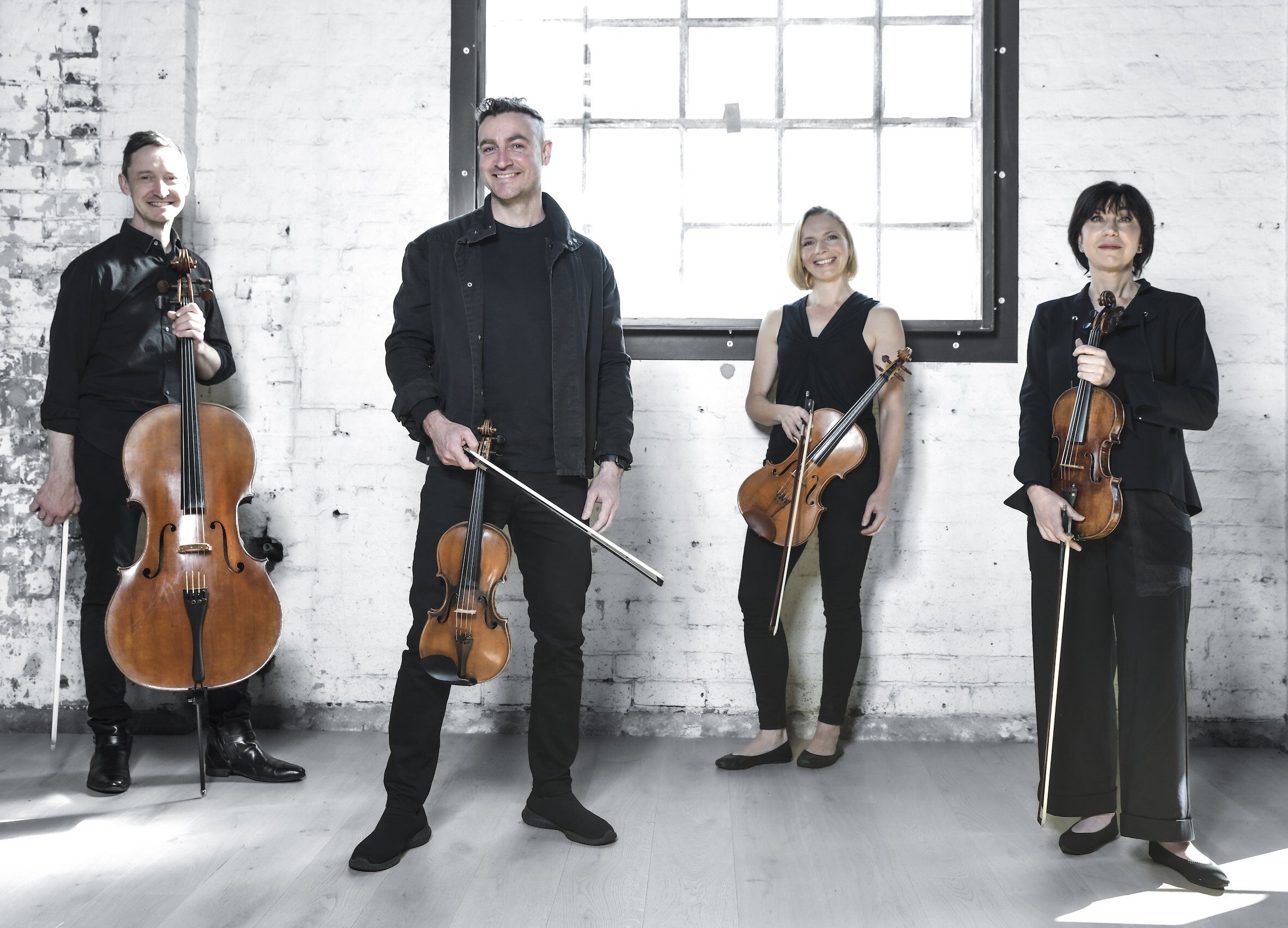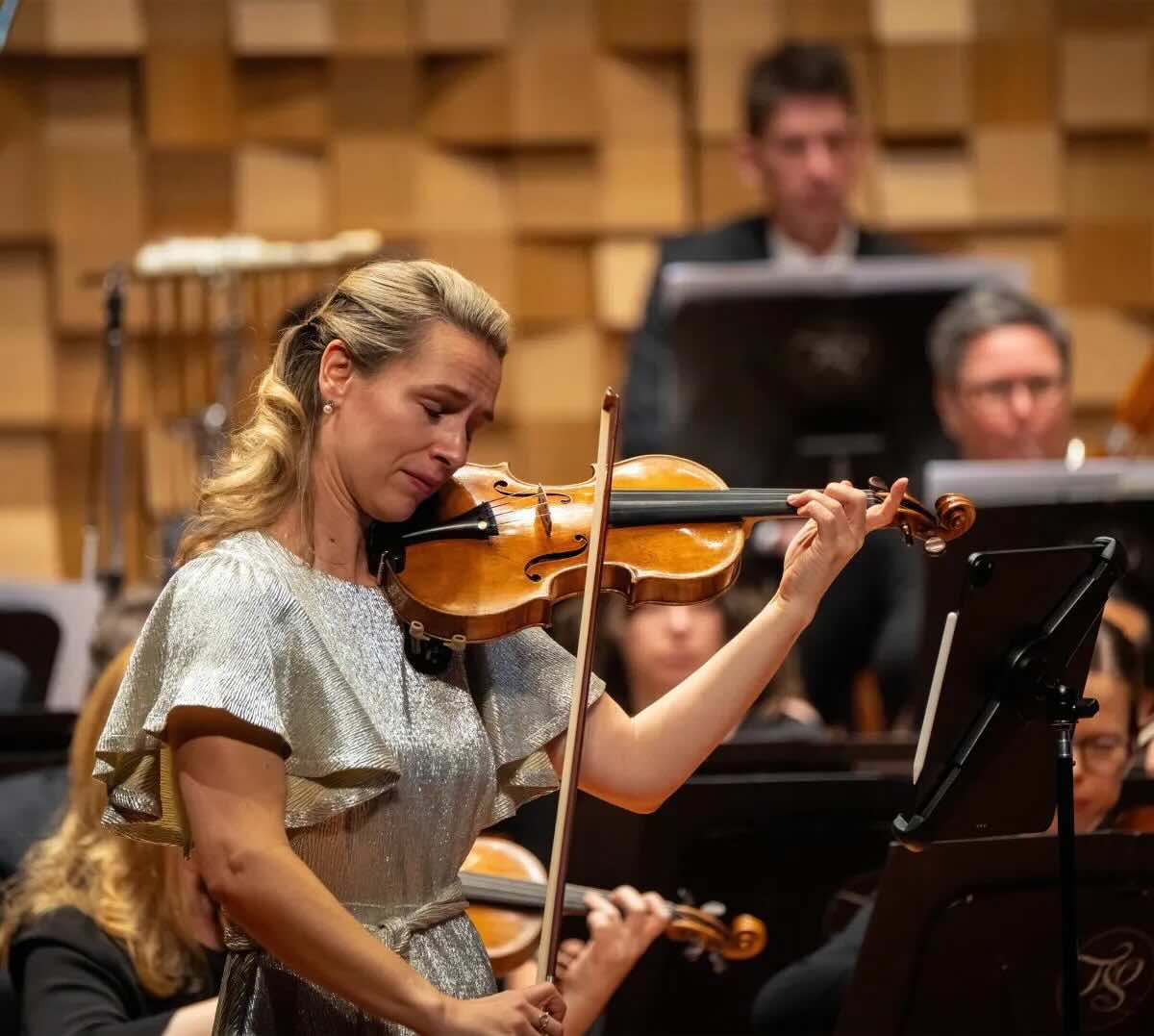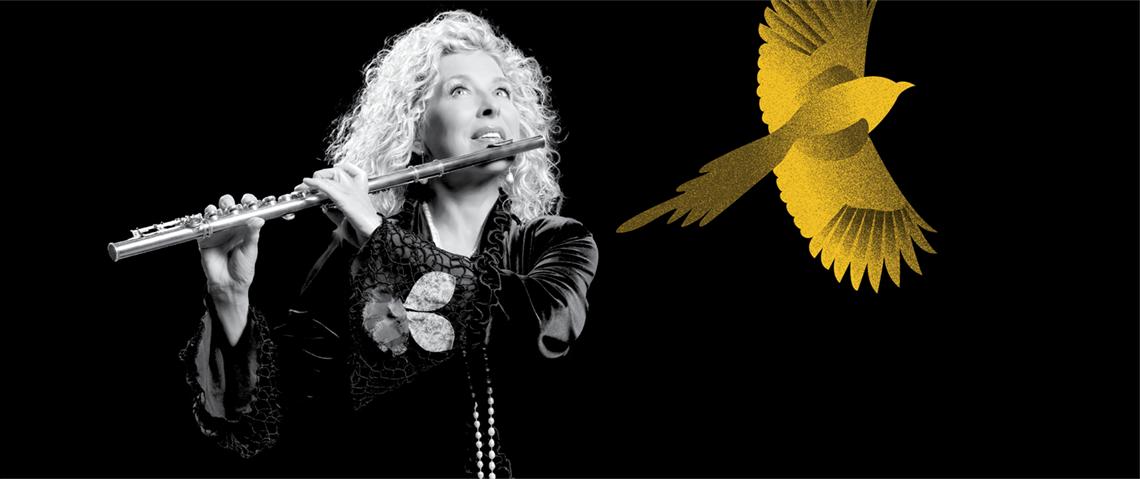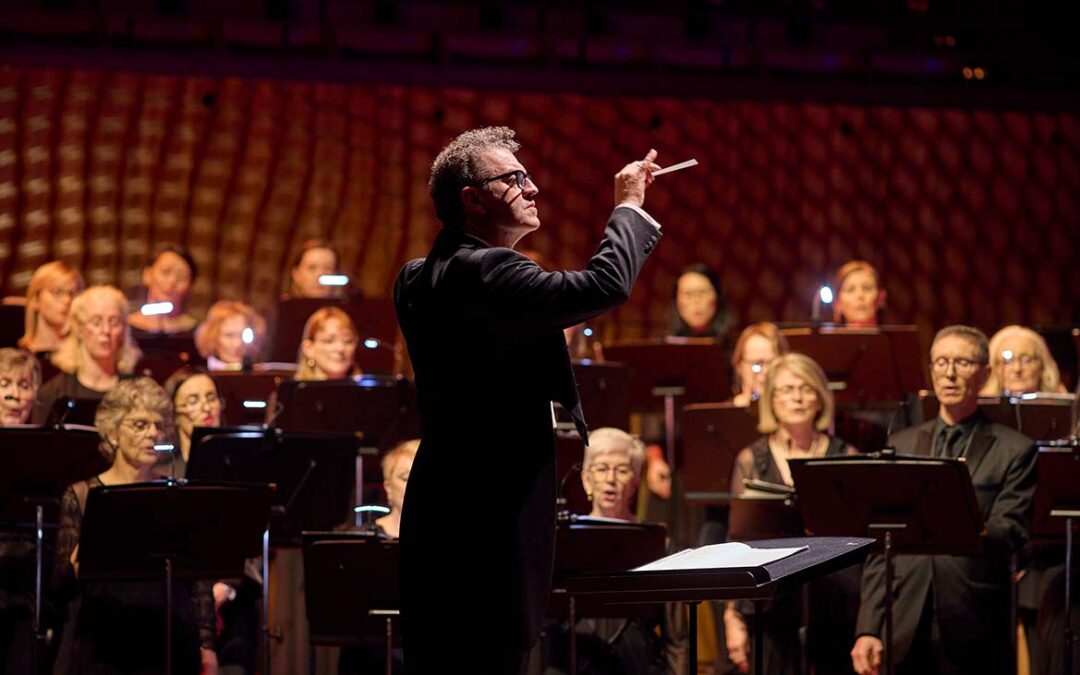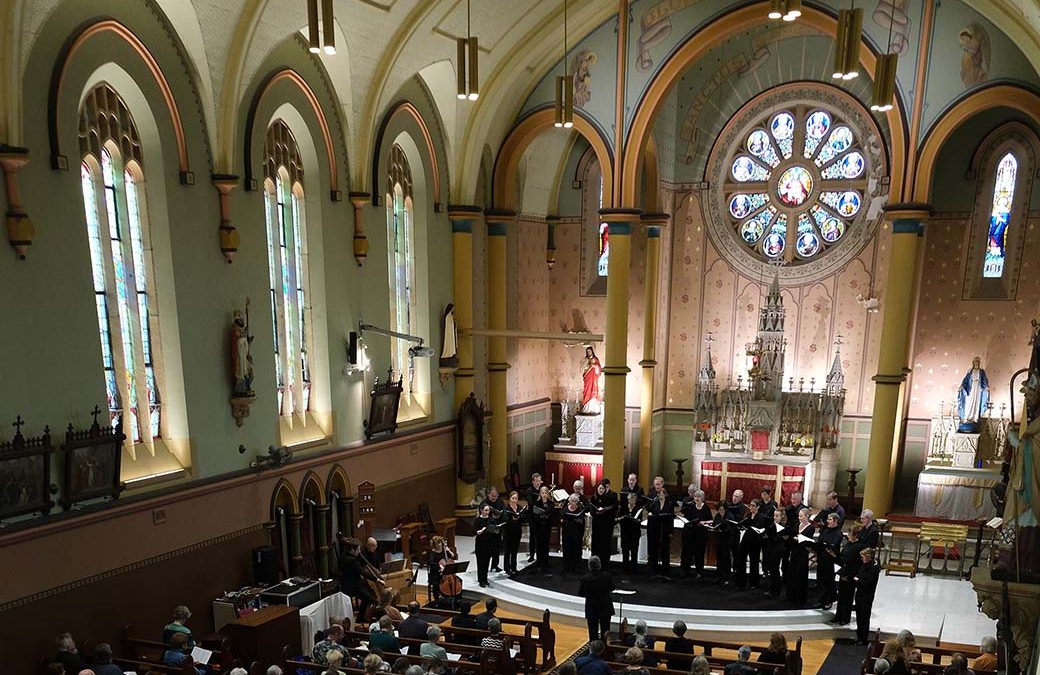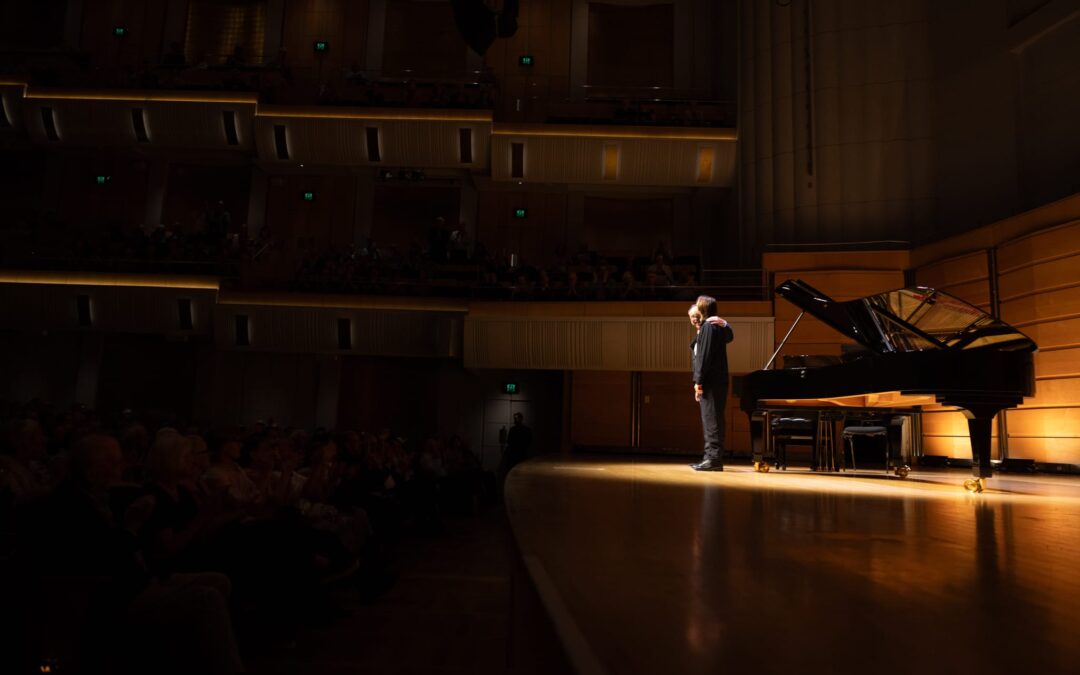On first hearing Mozart’s Piano Trio No.5 in C major, K.548 one would be surprised at its date of composition -1788- the same year as his majestic final three symphonies. He would play the late trio at the homes of friends rather than concert hall. The work has a spritely character which made it a brilliant piece to begin Kathryn Selby’s tour program, “A Tale of Two Cities” and invoke the enthusiasm of the audience. This work is one of the first to use the cello as a separate voice rather than an accompaniment and this was much appreciated by cellist Clancy Newman who excelled in the poignant and expressive slow movement.
We can hail Clancy as our own as he is of Australian parentage and kicked off his career by winning gold at the Dandenong Youth Festival as a 12 year old. He was born in Albany, New York State and studied at the Columbia-Juilliard school. He went on to win first prize at the prestigious Naumberg competition. Apart from playing with several highly regarded chamber groups, he has performed frequently as soloist, and he is a busy composer including works based on songs by popular vocalists such as Ed Sheeran and Taylor Swift to considerable acclaim.
It is well known that Brahms had temporarily retired when he heard the clarinettist Richard Mühlfeld and was stimulated to write several works for him, forming a relationship similar to that of Mozart with Anton Stadler and the same instrument. The clarinet trio in A minor is an introspective work yet his dramatic expressionism shines through and I feel that Brahms’s best compositions for small groups include the clarinet acting as a fulcrum. The second theme of the opening movement is particularly Brahmsian and with its descending thirds brings to mind the opening of his fourth symphony. These thirds recur in the slow movement which is peaceful throughout without the dramatic episodes that characterise the clarinet quintet written around the same time. An intermezzo in waltz time is followed by a more forceful final movement with a Gypsy flavour.
Benjamin Millefont studied at the Sydney Conservatorium of Music under Catherine McCorkill and Francisco Celata, both well known to local music lovers, before moving to London’s Royal College of Music where he graduated with first class honours. He has played as soloist and also with several orchestras most recently the Liverpool Philharmonic and along with Clancy is a big fan of modernistic classical music and is a regular at the Huddersfield contemporary music festival. He handled difficult arpeggios immaculately and was truly inspirational.
Stravinsky’s Soldier’s Tale was written in 1918 originally for three actors, several dancers and septet and I was lucky enough to hear the work in this form at the Huntington Festival in Mudgee. Stravinsky had the ability like his contemporary Schostakovich, to combine modern and often dissonant figures with classical chords achieving a dramatic yet attractive result. Kathryn introduced the story of the work, basically a peasant soldier’s meeting with the devil who promises a fortune which is temporarily fulfilled but ends in destruction. The version for clarinet trio was conceived because of wartime shortage of funds and performers. I thoroughly enjoyed this version – the incorporation of African American idioms as well as blues was enervating while the violin’s screeching chords actually defeats the devil but only for a moment while he eventually triumphs with grotesque rhythms and drum rolls. There are very difficult time changes in this work and these were handled with aplomb.
The above anti-Mephistophelean chords were played by Emily Sun who also excelled in the more conventional works. Emily studied at the Sydney Conservatorium of Music under Dr Robert Wilson and others and graduated with a double first. She has prevailed at numerous competitions including ones in Italy, Austria and Russia while she has performed as soloist at the Opera House, the Louvre and Wigmore Hall and was ABC’s young performer of 2018. She had a particularly difficult role in Stravinsky’s work which she passed with flying colours.
Arensky is one of a host of composers whose name is familiar but has never hit the high spots although his students included Rachmaninov and Scriabin. I have enjoyed his music previously and this piece has its attractions, particularly the first movement with its intertwining themes and romantic nature, while the scherzo which follows, of which more later is jaunty with a lively middle section. A moving Elegia in which the cello is prominent is followed by a finale which incorporates themes from earlier movements.
Rimsky-Korsakov, Arensky’s principal teacher, when asked about his pupil’s talent for composition stated that he did not just write in Tchaikovsky’s style, but copied him citing his violin concerto in particular. Plagiarism is a huge subject, as to where one draws the line between attribution and imitation. In the second movement of this work where Arensky’s jumpy heavily rhythmic waltz is almost a copy of the middle section of the scherzo from Saint-Saens’ second piano concerto written thirty years earlier. So much so that I wonder if the composer was also taught by Tom Lehrer’s Lobachevsky!
The Soldiers Tale in particular with its varied time signatures, syncopation, and frequent droning bass relies particularly on the cornerstone of the pianist, and of course this was carried off supremely by Kathryn Selby. It bears repeating that it is this excellence and effervescence that allows her to attract top performers from all parts of the world resulting in a concert of supreme quality and audience appreciation.
Thoughts about:
![]()
Selby and Friends | A Tale of Two Cities | City Recital Hall, Sydney | Tuesday 3rd March, 2020
![]()

